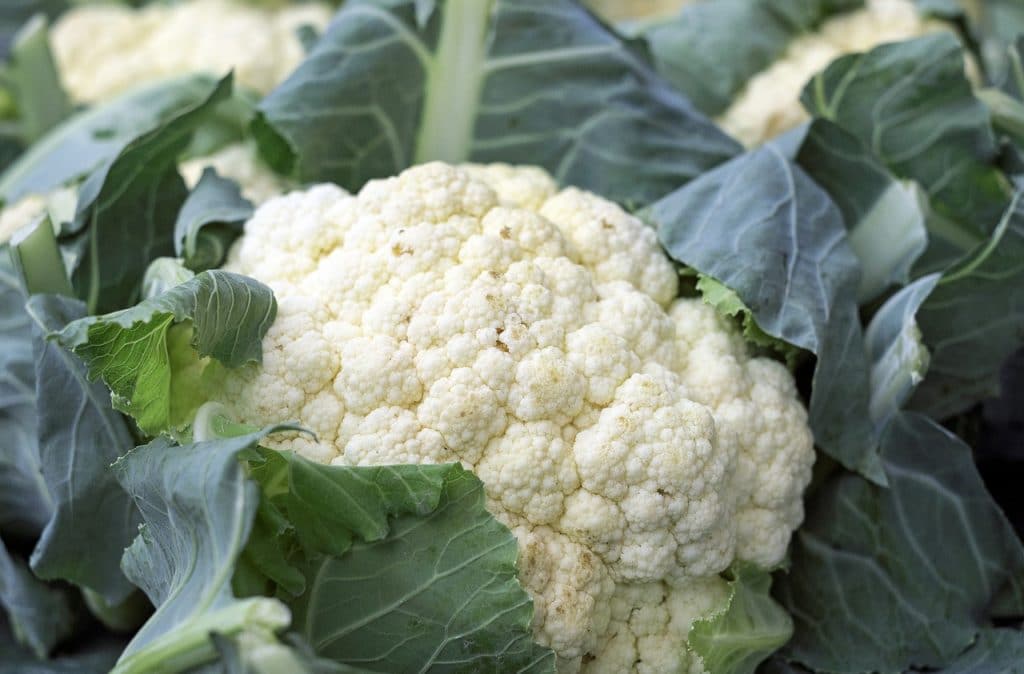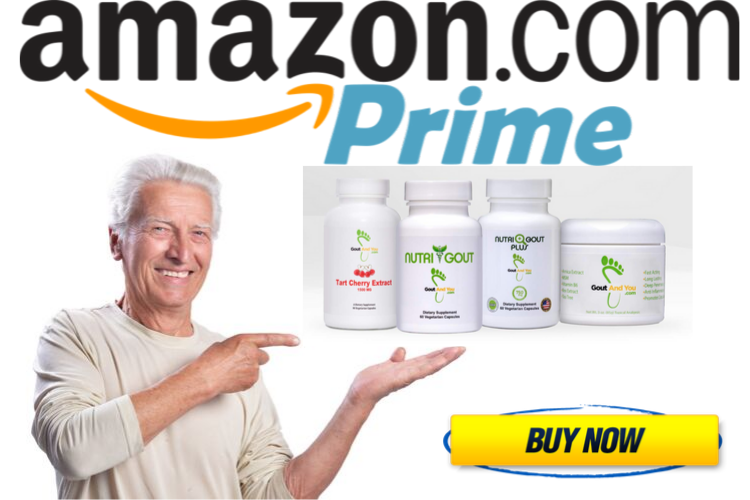
Cauliflower and gout: Is cauliflower safe to eat in a gout diet? And what about cauliflower cheese? This traditional British dish is a popular way to cook with cauliflower. But is it safe? Read on to discover the answer to both these questions.
Cauliflower and Gout
Let’s first remind ourselves of what gout is…
Gout, Purines, and Uric Acid
Gout is a very painful form of arthritis caused by high levels of uric acid circulating in the bloodstream. Uric acid is the end product of purine metabolism, which purines exist naturally in our bodies’ cells and in the cells of the food we eat.
Normally, excess uric acid is excreted via the kidneys through urine, leaving only healthy levels in the blood. But sometimes the body produces way too much uric acid or the kidneys just don’t excrete uric acid fast enough. Either way, this can lead to a buildup of excess uric acid in the bloodstream, a condition called ‘hyperuricemia.’
High uric acid levels in the blood can eventually lead to tiny crystals of monosodium urate settling in the joints and surrounding tissue. Their presence then triggers the body’s natural inflammatory response that floods the affected area with inflammatory mediators, causing the extremely painful symptoms of a gout attack or flare.
But these crystals can also lodge in the kidneys and, over time, fuse together to form painful uric acid kidney stones.
Around thirty percent of the uric acid produced in the body comes from the food we consume. And since different foods contain different amounts of purines, we gout sufferers have to pay close attention to what we eat.
For example, organ meats, wild game, and a good number of fish and shellfish species have high purine concentrations which produce higher levels of serum uric acid than foods with relatively moderate amounts of purine, like red meat, white meat, and some other seafood species.
There’s also a wide range of low-purine foods, which include vegetables, fruit, nuts, whole grains, dairy products and, somewhat surprisingly, some seafood too.
In order to reduce the risk of recurrent gout flares gout patients are usually advised to stick to a healthy, low-purine diet. which means completely avoiding high-purine foods, eating only limited amounts of moderately-high purine foods, and consuming plenty low-purine foods.
Now let’s take a look at cauliflower…
Cauliflower
Cauliflower is a cruciferous vegetable, part of the Brassica oleracea family, which also includes broccoli, Brussels sprouts, cabbage, and kale.
It’s low in calories, high in fiber, and an excellent source of vitamins and minerals, such as vitamin C and calcium. It also contains several powerful antioxidants that help protect against various diseases. These are all important nutrients in a healthy diet.
Here are the top 8 health benefits of cauliflower according to Healthline.com:
- An excellent source of vitamins and minerals, containing some of almost every vitamin and mineral that you need.
- Contains a high amount of fiber, which is important for digestive health and may reduce the risk of several chronic diseases.
- Provides a significant amount of antioxidants, which are beneficial for reducing inflammation and protecting against several chronic diseases.
- Low in calories but high in fiber and water — all properties that may assist in weight loss.
- Good source of choline, a nutrient many people are lacking. It is involved in many processes in the body and works to prevent several diseases.
- Rich in sulforaphane, a plant compound with many beneficial effects, such as reduced risk of cancer, heart disease and diabetes.
- Can replace grains and legumes in many recipes, which is a great way to eat more veggies or follow a low-carb diet.
- Many ways to add cauliflower to your diet. It can be consumed cooked or raw and makes a fantastic addition to just about any dish.
Still, we gout sufferers have to be sure that there isn’t an increased risk of gout flare-ups…
Cauliflower in a Gout-friendly Diet
Cauliflower contains a moderate amount of purines so may be added into your gout diet as long as it’s eaten in moderation: a maximum of 1 x 3.5 oz (100 g) serving on any given day.
But we also have to take into account how it’s cooked, particularly any additives. For example, what about cauliflower with cheese sauce?
Is cauliflower cheese safe to eat with gout?
Cauliflower cheese is a traditional British favorite that can be eaten as a main or a side dish and one of the most popular ways to cook with cauliflower.
The only thing added to the cauliflower is the cheese sauce, so that’s what we need to look at in terms of its purine content…
Luckily, cheese is low in purines so is safe in a gout diet in its own right.
But what about the rest of the ingredients?
Well, apart from cheese (usually mature cheddar), the basic ingredients are plain flour, butter, milk, with salt and black pepper to season.
Some recipes also call for things like breadcrumbs, cream cheese, double cream, mustard, and nutmeg. Some go even further and use onions, garlic, and other ingredients to flavor the milk.
I much prefer simple and basic. And there’s nothing to be afraid of in a basic white sauce:
- Milk and cheese are low in purines.
- At least one study has linked dairy consumption to a reduced risk of gout.
- Flour is also low in purines.
So there’s no need to give up on cauliflower cheese. But remember, although the cheese sauce itself is safe, cauliflower is moderately high in purines, so only eat cauliflower cheese in moderation.
There are commercial sauces, of course, but they have other ‘stuff’ added: stabilizers, modified flavors, starches, thickeners, dry dairy powders, coloring, and so on.
However, a gout diet is at it’s healthiest and most effective with natural organic foods and ingredients, so a better choice would be to stick to your own homemade cheese sauce.
Here’s a very easy cauliflower cheese recipe:
But please be aware that, although most people are able to consume cauliflower in moderation, there are some risks in eating too much…
Cauliflower Risks
Cauliflower is rich in vitamin K which can interfere with blood-thinning medications. People with medical conditions requiring blood-thinning drugs should consult their doctor before consuming foods rich in vitamin K.
Eating too much cauliflower and other cruciferous vegetables can cause bloating and flatulence due to its high fiber content. Those with gastrointestinal problems, such as irritable bowel syndrome, are particularly at risk.
Other Gout Risk Factors
It’s not just dietary purines, there are other risk factors that you can control. For example, being overweight; drinking too much alcohol (especially beer); consuming too much added fructose (in many soft drinks and processed foods); dehydration; are all known risk factors for gout.
So as well as avoiding high-purine foods, limiting moderate-purine foods, and eating plenty of vegetables, salads, fruit, and nuts — not forgetting low-fat dairy products, such as low-fat milk, yogurt and cheese — you should also:
- avoid or severely limit processed foods and sugary drinks.
- seriously reduce your alcohol consumption, beer especially, and never binge drink.
- get your weight down to a healthy level appropriate for you.
- stay hydrated by drinking 12 x 8oz glasses of water a day, more in very hot weather.



